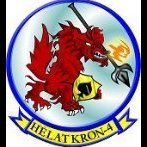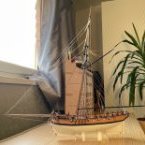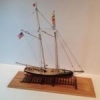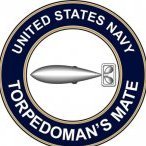-
Posts
2,136 -
Joined
-
Last visited
Contact Methods
-
MSN
ian_h_grant@hotmail.com
Profile Information
-
Gender
Male
-
Location
Ottawa, Canada
-
Interests
Cycling, Nordic Skiing, Back Country Canoe Camping, Pets, Ships
Recent Profile Visitors
-
 Ian_Grant reacted to a post in a topic:
Type 26 City-Class frigate by NavyShooter - 3D Print - 1/144 - Display
Ian_Grant reacted to a post in a topic:
Type 26 City-Class frigate by NavyShooter - 3D Print - 1/144 - Display
-
 Canute reacted to a post in a topic:
Type 26 City-Class frigate by NavyShooter - 3D Print - 1/144 - Display
Canute reacted to a post in a topic:
Type 26 City-Class frigate by NavyShooter - 3D Print - 1/144 - Display
-
 Canute reacted to a post in a topic:
MS Europic Ferry 1967 by Ian_Grant - 1/96 Scale - 3D-Printed - Ferry
Canute reacted to a post in a topic:
MS Europic Ferry 1967 by Ian_Grant - 1/96 Scale - 3D-Printed - Ferry
-
 NavyShooter reacted to a post in a topic:
Type 26 City-Class frigate by NavyShooter - 3D Print - 1/144 - Display
NavyShooter reacted to a post in a topic:
Type 26 City-Class frigate by NavyShooter - 3D Print - 1/144 - Display
-
 ECK reacted to a post in a topic:
HMS Victory by ECK - OcCre - 1/87
ECK reacted to a post in a topic:
HMS Victory by ECK - OcCre - 1/87
-
 Ian_Grant reacted to a post in a topic:
Type 26 City-Class frigate by NavyShooter - 3D Print - 1/144 - Display
Ian_Grant reacted to a post in a topic:
Type 26 City-Class frigate by NavyShooter - 3D Print - 1/144 - Display
-
 Ian_Grant reacted to a post in a topic:
Type 26 City-Class frigate by NavyShooter - 3D Print - 1/144 - Display
Ian_Grant reacted to a post in a topic:
Type 26 City-Class frigate by NavyShooter - 3D Print - 1/144 - Display
-
 Ian_Grant reacted to a post in a topic:
Type 26 City-Class frigate by NavyShooter - 3D Print - 1/144 - Display
Ian_Grant reacted to a post in a topic:
Type 26 City-Class frigate by NavyShooter - 3D Print - 1/144 - Display
-
 Ian_Grant reacted to a post in a topic:
Type 26 City-Class frigate by NavyShooter - 3D Print - 1/144 - Display
Ian_Grant reacted to a post in a topic:
Type 26 City-Class frigate by NavyShooter - 3D Print - 1/144 - Display
-
 Ian_Grant reacted to a post in a topic:
Type 26 City-Class frigate by NavyShooter - 3D Print - 1/144 - Display
Ian_Grant reacted to a post in a topic:
Type 26 City-Class frigate by NavyShooter - 3D Print - 1/144 - Display
-
 Ian_Grant reacted to a post in a topic:
Type 26 City-Class frigate by NavyShooter - 3D Print - 1/144 - Display
Ian_Grant reacted to a post in a topic:
Type 26 City-Class frigate by NavyShooter - 3D Print - 1/144 - Display
-
This is the Bondo Spot/Glazing Putty? I saw a prop maker (armour, star wars helmets, etc) on youtube using this as a first coat ONLY on large ridges and grooves, then thinning it with acetone and brushing on to fill smaller grooves and reduce sanding effort/time. I plan to try this on my 3D print hull. I remember seeing the type 26 file on cgtrader. There's also a very nice RC minesweeper model which tempted me "bigly" (a la Trump).............
- 28 replies
-
- Type 26
- City Class
-
(and 2 more)
Tagged with:
-
 Ian_Grant reacted to a post in a topic:
Type 26 City-Class frigate by NavyShooter - 3D Print - 1/144 - Display
Ian_Grant reacted to a post in a topic:
Type 26 City-Class frigate by NavyShooter - 3D Print - 1/144 - Display
-
 Ian_Grant reacted to a post in a topic:
Type 26 City-Class frigate by NavyShooter - 3D Print - 1/144 - Display
Ian_Grant reacted to a post in a topic:
Type 26 City-Class frigate by NavyShooter - 3D Print - 1/144 - Display
-
 Ian_Grant reacted to a post in a topic:
Flying Cloud 1851 by hof00 - Mamoli - 1/96 - American clipper
Ian_Grant reacted to a post in a topic:
Flying Cloud 1851 by hof00 - Mamoli - 1/96 - American clipper
-
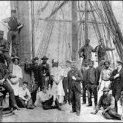
HMS Victory by ECK - OcCre - 1/87
Ian_Grant replied to ECK's topic in - Kit build logs for subjects built from 1751 - 1800
Very very nice! -
 KeithAug reacted to a post in a topic:
Herzogin Cecilie 1902 by Jim Lad - Four Masted Barque
KeithAug reacted to a post in a topic:
Herzogin Cecilie 1902 by Jim Lad - Four Masted Barque
-
 Landlubber Mike reacted to a post in a topic:
MS Europic Ferry 1967 by Ian_Grant - 1/96 Scale - 3D-Printed - Ferry
Landlubber Mike reacted to a post in a topic:
MS Europic Ferry 1967 by Ian_Grant - 1/96 Scale - 3D-Printed - Ferry
-
 Landlubber Mike reacted to a post in a topic:
MS Europic Ferry 1967 by Ian_Grant - 1/96 Scale - 3D-Printed - Ferry
Landlubber Mike reacted to a post in a topic:
MS Europic Ferry 1967 by Ian_Grant - 1/96 Scale - 3D-Printed - Ferry
-
 Keith Black reacted to a post in a topic:
Herzogin Cecilie 1902 by Jim Lad - Four Masted Barque
Keith Black reacted to a post in a topic:
Herzogin Cecilie 1902 by Jim Lad - Four Masted Barque
-
 Canute reacted to a post in a topic:
DKM Bismarck by MikeConnectrix - Scale 1:150 - 3D printed - RADIO
Canute reacted to a post in a topic:
DKM Bismarck by MikeConnectrix - Scale 1:150 - 3D printed - RADIO
-
 NavyShooter reacted to a post in a topic:
DKM Bismarck by MikeConnectrix - Scale 1:150 - 3D printed - RADIO
NavyShooter reacted to a post in a topic:
DKM Bismarck by MikeConnectrix - Scale 1:150 - 3D printed - RADIO
-
Here is a short video of an early galley sea trial at a boat club winter meeting at a rented local pool, if interested. No decorations or deck details added at the time; only some painting; no rudders yet. (not to hijack your build; carry on......)
-
Extremely cool tech! Are you a fellow retired engineer? I used an Arduino to control the oars in my RC Roman galley, writing code to read the throttle and rudder inputs and control the oars via two servos per side; one for the fore-aft motion and one for up/down. The model can't overcome much of a breeze, and I found even my oversized rudders couldn't steer her at her slow speed. She's on the shelf until I have more time and ideas. Writing the code was fun, even though I was a hardware guy all my career. 😏
-
Thirty servos!! Just how long is this model? My 1/150 HMS Lion from WW1 is about 54" long; I used mini servos for turret traverse. It would be impressive to have elevation too but the turrets from the 70's are solid wood (this is a "restoration" build on one of my teenage builds). There is plenty of room in fact I was planning to add smoke but the smoke unit I bought has a mind of its own as far as actually making smoke. Looking forward to your build.......... Ian ps: if you click on "follow" at the top of your log, you'll get automatic notifications if someone adds a comment.
-
There seem to be more and more 3D printed ships showing up here. I've started one too. It's interesting. My hull section #4, a 22 hr print, seems to have warped as it cooled even though I added inner and outer brims. Trying to decide how to proceed...... Do you plan to have the turrets rotate? Access along the hull inside looks to be restricted by your joiners. Looking forward to more! ian
-
Looking very nice! Will be very pretty on the water......
- 62 replies
-
- Nordkap
- Billing Boats
-
(and 1 more)
Tagged with:
-
Just found your log. Great work! You described yourself as a Fusion neophyte (!) but you seem to have picked it up quickly and well. I've often read about sculpting hulls in Fusion but never dared try it. Your progress has been very rapid. I just started printing an RC ship too but I simply bought the folders of .stl files for my printer. So far the hull sections are done. I hope I can move through the rest at a similar pace as you! Ian
-

HMS Victory by ECK - OcCre - 1/87
Ian_Grant replied to ECK's topic in - Kit build logs for subjects built from 1751 - 1800
Merry Christmas to you too! She's looking great! Don't know why this is typing in bold letters! I could have saved you some knots by telling you that not all ratlines pass across all the lower shrouds, in fact only every fifth one......too late now.....a good reference to have for Victory is Longridge's Anatomy of Nelson's Ships in which stuff like this is detailed. It has very very detailed notes on line and block sizes for each piece of rigging. -
All eight hull sections printed, consuming over 100 hours of print time. And nearly three reels of filament. I've epoxied together only the first two thus far, using JB Weld which is my new favourite epoxy despite its black colour. I'm waiting for some fiberglass cloth seam tape to arrive to put some more epoxy inside this joint before adding more sections, because the enclosed front half would quickly become unwieldy to access for joint reinforcement. The design is such that the superstructure is not removable if built according to instructions. I'm not sure I like that idea as that's a lot of hull interior that can only be reached by sliding your arm in from the admittedly large opening when the removable upper vehicle deck is removed. The designer's goal was to prevent superstructure damage due to handling, were it removable. I'll have to print some of the superstructure parts before deciding what to perhaps have removable, if only to be able to fiddle with any ballast in her front half. I also had a look at some of the superstructure files. They surprised me with the time and plastic they will take to print too. I was thinking after the hull things would move quickly but there are more 12-hour prints ahead. I also discovered I don't like the lifeboat file; I will try my "Titanic lifeboat" file when I reach that point. Here she is sitting in front of the nearly-completed HMS Lion. That's a 12" ruler sitting in front. Merry Christmas to my so-far zero followers!!!
- 6 replies
-
- ferry
- Europic Ferry
-
(and 1 more)
Tagged with:
-

USS Constitution by mtbediz - 1:76
Ian_Grant replied to mtbediz's topic in - Build logs for subjects built 1751 - 1800
Just stumbled across your build - what a beautiful model! Ultra-realistic looking rigging.......immaculate paintwork........
About us
Modelshipworld - Advancing Ship Modeling through Research
SSL Secured
Your security is important for us so this Website is SSL-Secured
NRG Mailing Address
Nautical Research Guild
237 South Lincoln Street
Westmont IL, 60559-1917
Model Ship World ® and the MSW logo are Registered Trademarks, and belong to the Nautical Research Guild (United States Patent and Trademark Office: No. 6,929,264 & No. 6,929,274, registered Dec. 20, 2022)
Helpful Links
About the NRG
If you enjoy building ship models that are historically accurate as well as beautiful, then The Nautical Research Guild (NRG) is just right for you.
The Guild is a non-profit educational organization whose mission is to “Advance Ship Modeling Through Research”. We provide support to our members in their efforts to raise the quality of their model ships.
The Nautical Research Guild has published our world-renowned quarterly magazine, The Nautical Research Journal, since 1955. The pages of the Journal are full of articles by accomplished ship modelers who show you how they create those exquisite details on their models, and by maritime historians who show you the correct details to build. The Journal is available in both print and digital editions. Go to the NRG web site (www.thenrg.org) to download a complimentary digital copy of the Journal. The NRG also publishes plan sets, books and compilations of back issues of the Journal and the former Ships in Scale and Model Ship Builder magazines.


